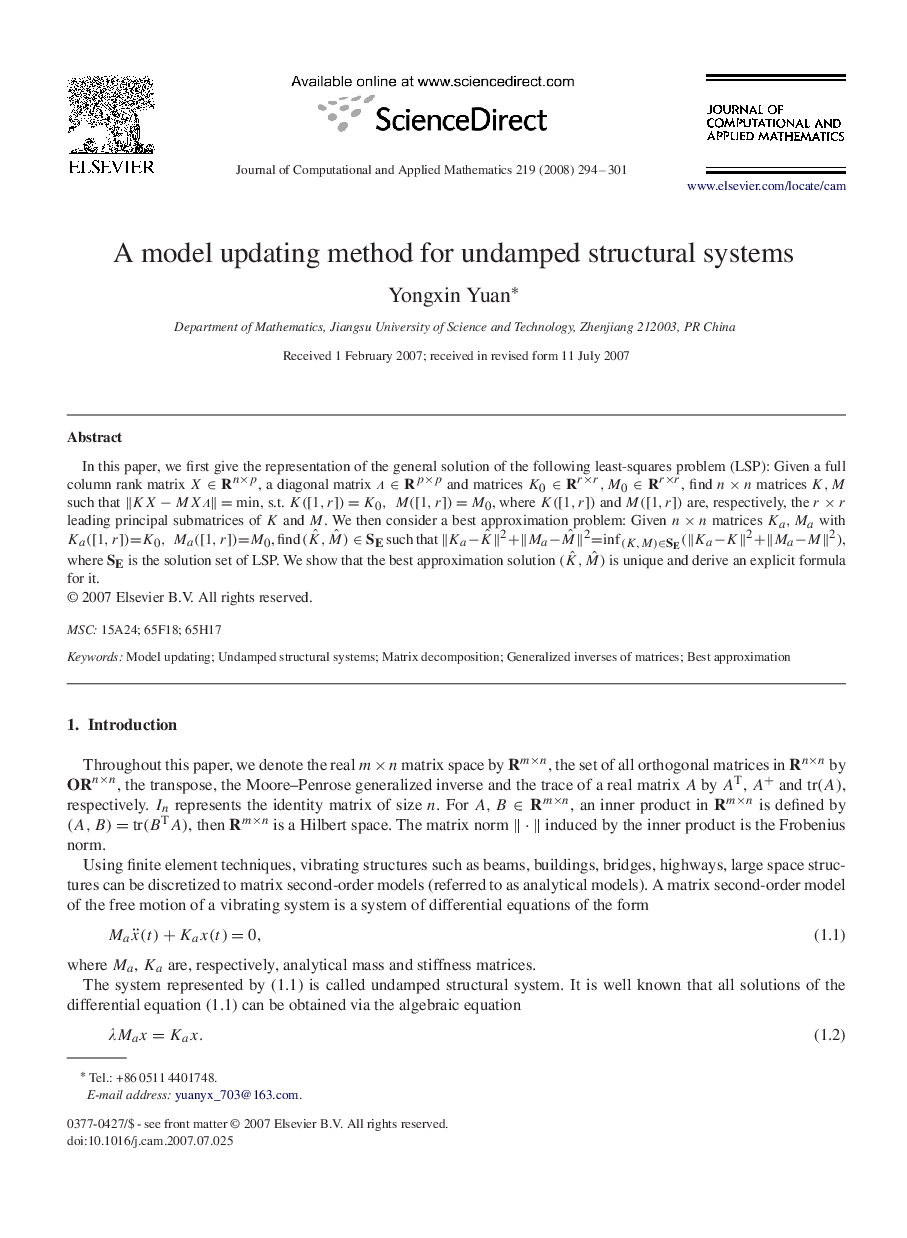| Article ID | Journal | Published Year | Pages | File Type |
|---|---|---|---|---|
| 4641627 | Journal of Computational and Applied Mathematics | 2008 | 8 Pages |
In this paper, we first give the representation of the general solution of the following least-squares problem (LSP): Given a full column rank matrix X∈Rn×pX∈Rn×p, a diagonal matrix Λ∈Rp×pΛ∈Rp×p and matrices K0∈Rr×r,M0∈Rr×rK0∈Rr×r,M0∈Rr×r, find n×nn×n matrices K,MK,M such that ∥KX-MXΛ∥=min∥KX-MXΛ∥=min, s.t. K([1,r])=K0,M([1,r])=M0, where K([1,r])K([1,r]) and M([1,r])M([1,r]) are, respectively, the r×rr×r leading principal submatrices of KK and MM. We then consider a best approximation problem: Given n×nn×n matrices Ka,MaKa,Ma with Ka([1,r])=K0,Ma([1,r])=M0, find (K^,M^)∈SE such that ∥Ka-K^∥2+∥Ma-M^∥2=inf(K,M)∈SE(∥Ka-K∥2+∥Ma-M∥2), where SESE is the solution set of LSP. We show that the best approximation solution (K^,M^) is unique and derive an explicit formula for it.
